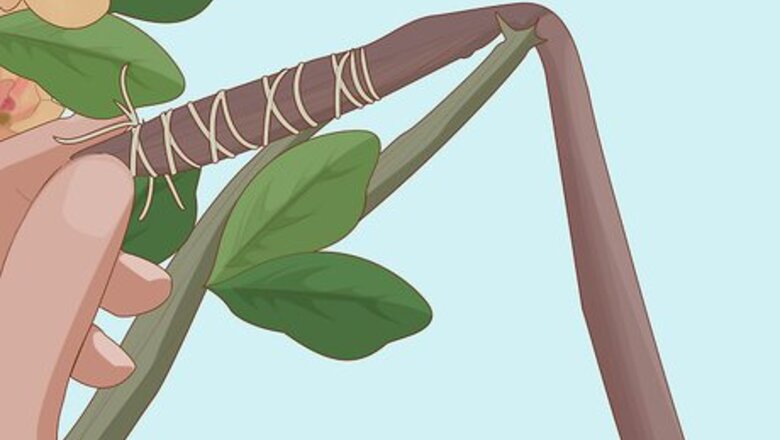
views
Obtaining Desert Rose Seeds

Wrap fresh desert rose seed pods with wire or twine. When seed pods appear on an adult desert rose, wrap wire or twine around them so they don’t open. If the seed pods open, the seeds will disperse, and you will not be able to use them to grow a new plant. It’s best to use fresh seeds because they’re more likely to produce than dried seeds. Desert roses mature slowly and take several years to produce seed pods. Typically, the plant must be 8 years old to obtain viable seeds. Alternatively, obtain fresh seeds from a garden supply store or other reputable dealers.
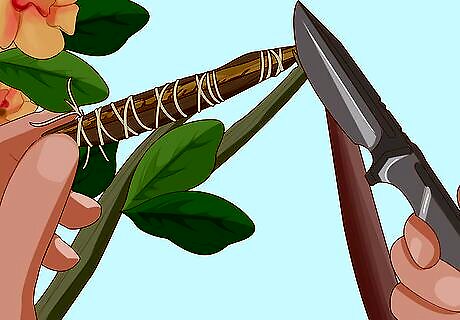
Clip the pods from the plant once they mature. The pods must be allowed to mature before removal; otherwise, the seeds may not be developed enough to grow. When the seed pods try to open, they are mature and ready for removal. Clip them off with a sharp knife or pair of scissors. You may also be able to break the pods off with your hands. The best time to sow desert rose seeds is in the spring.
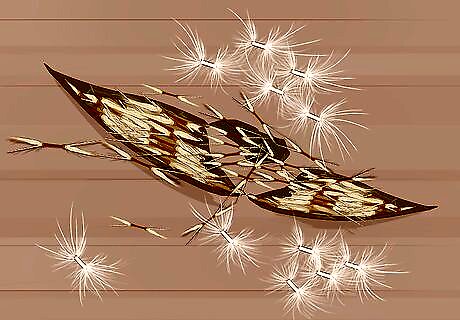
Allow the seed pods to dry, then crack them open. Set the seed pods out on a flat surface to dry. Then, remove the ties from each pod and gently crack them open with your thumbnail. Each pod should contain multiple “feathery” seeds.
Starting the Seeds
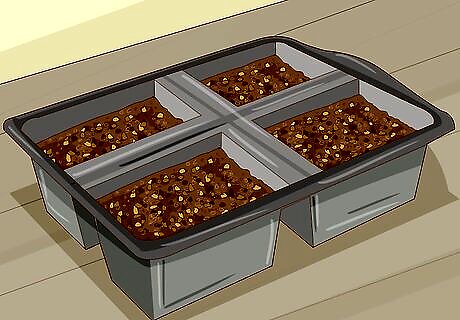
Fill a plastic seedling tray with a well-draining growing medium. Use either a plastic seedling tray or some small pots as a container for your seeds. If the containers don’t have drainage holes, first poke a small hole into the bottom. Then, fill the container with your growing medium. Vermiculite works well, as does a mix of soil and sand or soil and perlite. If you need to add holes to a plastic seedling tray, poke the tip of a pen or a large needle into the bottom of each compartment. The hole does not need to be large.
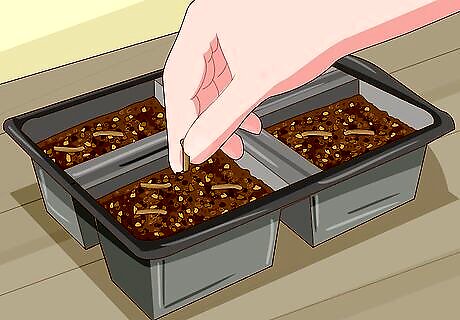
Scatter the seeds over the growing medium, then cover with soil. If you’re using seedling trays or containers with a diameter of 4 inches (10 cm) or less, only plant one seed per compartment. If you’re using a larger pot, spread several seeds evenly over the soil. Then, use just enough soil to barely cover the seeds and prevent them from blowing away. The seeds shouldn’t be buried deeply.
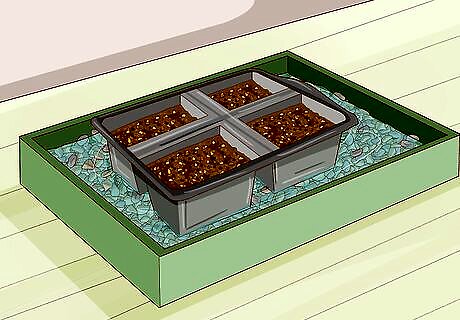
Put the tray on top of a bin filled with stones and water. Fill a wide tray or bin with enough stones to completely cover the bottom of the bin. The water should not rise above the level of the stones. Then, set the seedling tray on top of the stones, and refresh the water daily to provide the seeds with sufficient water from below.
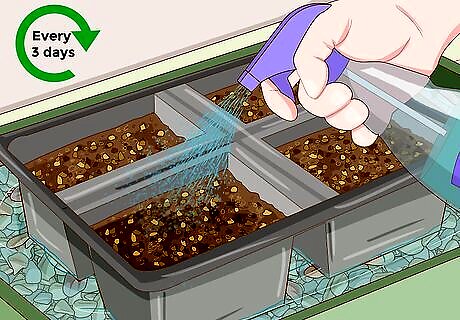
Spray the soil with water once every 3 days for a week or so. In addition to allowing the seeds to absorb water from below, spray the top of the soil as well. Use a spray bottle and spray the surface of the soil until it feels moist to the touch. Cease above-soil watering once the seeds germinate into seedlings. This should occur within the first week or two. You should still water the seedlings from below for the first month.
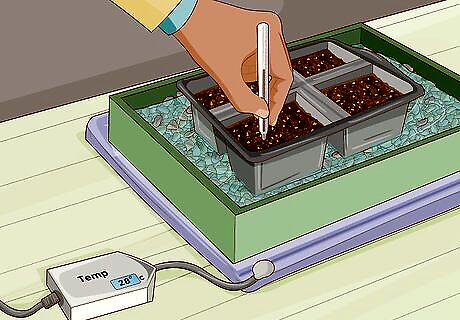
Place the entire structure over a heating pad set to low. During germination, keep the soil and its seeds at a temperature between 80 and 85 degrees Fahrenheit (27-29 degrees Celsius). Periodically test the soil with a thermometer to monitor the temperature accurately.
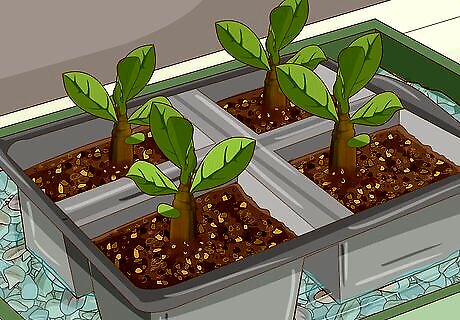
Check the seedlings for leaves. As your seedlings grow, you’ll eventually need to move them into more permanent containers. Before you do this, make sure your seedlings have grown enough to do so. Each seedling should have about 6 “true leaves” at the time of transplant.
Transplanting the Seedlings
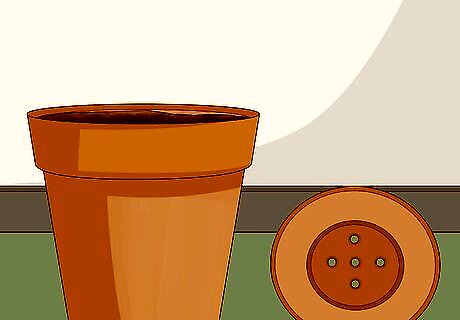
Select a medium-sized pot or container with 1 or more drainage holes. The pot should be between six and eight inches (15 to 20 centimeters) in diameter. Desert roses do not mind being somewhat root-bound; in fact, they often grow better this way. You will need to re-pot the plant as it grows bigger, however. Unglazed ceramic pots work best since the soil can dry out in between waterings. If you’re using a clay pot, select one that is a little wider than necessary to provide the roots with extra room for expansion. Clay is more likely to crack with the pressure of expanding roots.
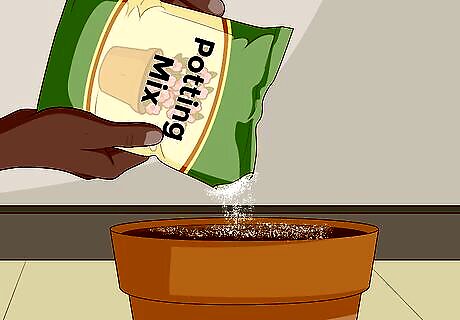
Fill the pot with potting mix and add a handful of fertilizer. Be sure to use a well-draining potting mix; a mix made of equal parts sharp sand and cactus potting soil works notably well. Avoid heavy soils that do not drain well, since desert roses prefer somewhat dry roots and can rot quickly if kept saturated. Then, mix in a handful of slow-release fertilizer. Check the instructions provided on the fertilizer’s label for precise measurements. Sharp sand, also called silica sand or builder's sand, has sharp, jagged edges and looks similar to small-grain aquarium gravel. It is often used to prepare concrete, and you can usually find it in a home improvement store.
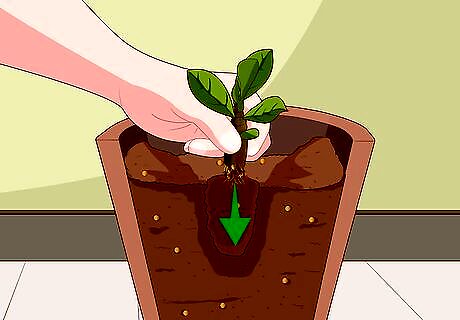
Dig a small hole in the middle of the soil and place the seedling in it. The hole should be the same depth as the container currently holding the seedling. Gently remove the seedling from its current container, then place it into the hole and pack the soil around it. The seedling should be firmly fixed in place. If the seedling was grown in a thin plastic seedling tray, lightly squeeze the sides of the compartment until the seedling breaks free, soil and all.
Caring for Your Desert Rose
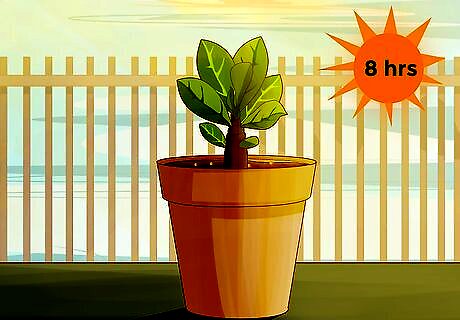
Place the pot in full sun for at least 8 hours a day. Desert roses thrive in direct sunlight, so try to choose a location where they can get plenty of natural light. For example, a south-facing window that receives a lot of direct sunlight is ideal. Wherever you plant your desert rose, make sure it receives at least 8 hours of sun per day. In most cases, desert roses should be grown indoors because they need consistent warm temperatures, but if you live in an area where they can successfully grow outdoors, place them in an area that is not completely shaded by taller plants but that provides some protection from high-noon sun. This way, the leaves won’t be scorched.
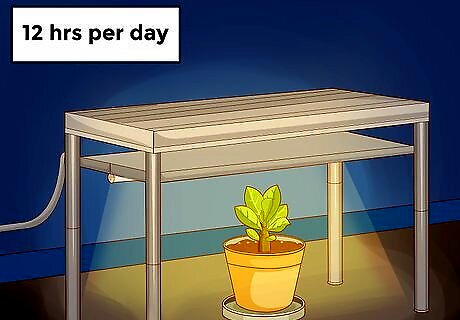
Consider artificial lighting if you cannot provide adequate sunlight. Depending on where you live and where your windows are located, it might not always be possible to provide the amount of direct sunlight your plant needs. To give them some extra support, place your plants 6 inches (15 cm) below fluorescent grow lights. Allow them to soak in 12 hours of light per day.
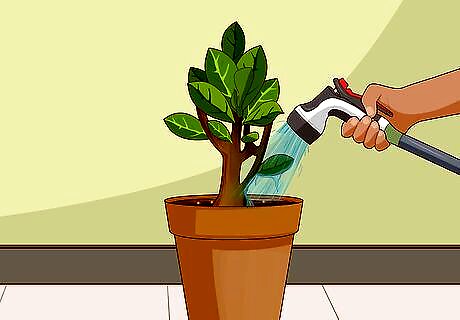
Water your desert rose when the soil feels dry. Allow the soil to dry out in between waterings and only add water once the top inch or two (2.5 to 5 cm) of soil feels dry to the touch. Water lightly when necessary, making the soil moist without saturating it. If the soil becomes too saturated, it can lead to root rot. In the fall and winter, you’ll only need to water your desert rose about once a month. To determine if your plant is well-hydrated, check the trunk. If it’s swollen and thick, your plant has enough water.
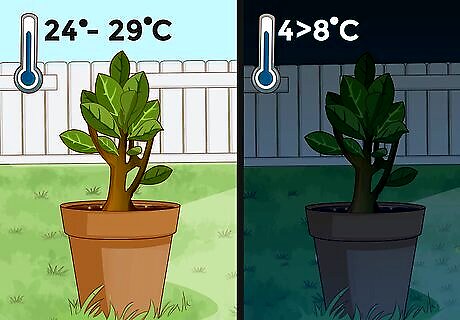
Keep the daytime temperature between 75-85 degrees Fahrenheit. It’s important to keep your plants warm so they continue to grow and thrive. The ideal daytime temperature ranges between 75 and 85 degrees Fahrenheit (24 to 29 degrees Celsius), with night temperatures dropping as much as 15 degrees Fahrenheit (8 degrees Celsius). Never allow the soil to drop below 40 degrees Fahrenheit (4 degrees Celsius). At this temperature, the plant could suffer severe damage or even death.
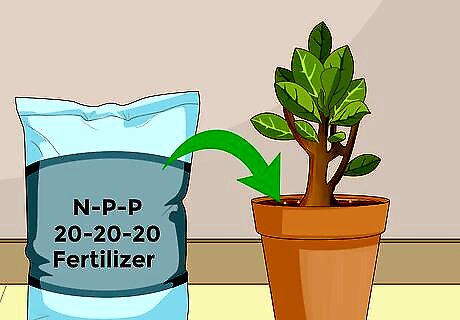
Feed your desert rose with liquid fertilizer so it flowers. Use a 20-20-20 fertilizer, diluted to half strength. A 20-20-20 fertilizer has completely balanced levels of nitrogen, phosphorus, and potassium. Nitrogen encourages the growth of foliage, phosphorus mainly helps with root development, and potassium maintains the flowers that bud. If the fertilizer contains a higher percentage of any one element, your desert rose may develop poorly.
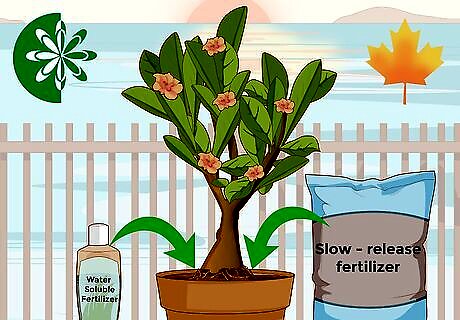
Use different fertilizers throughout the year. Give your desert rose a water-soluble liquid fertilizer every other week during the spring. By summer, switch to a single application of slow-release palm fertilizer, then do so again in the early fall. In the winter, give the flower a few doses of liquid fertilizer, as long as you keep the soil temperature at or above 80 degrees Fahrenheit (27 degrees Celsius). After 3 years, when the plant matures, stop giving the desert rose liquid fertilizer. It can still benefit from slow-release fertilizer, however.



















Comments
0 comment